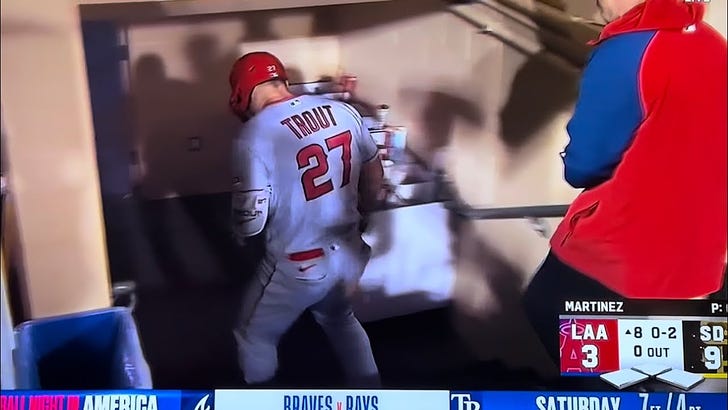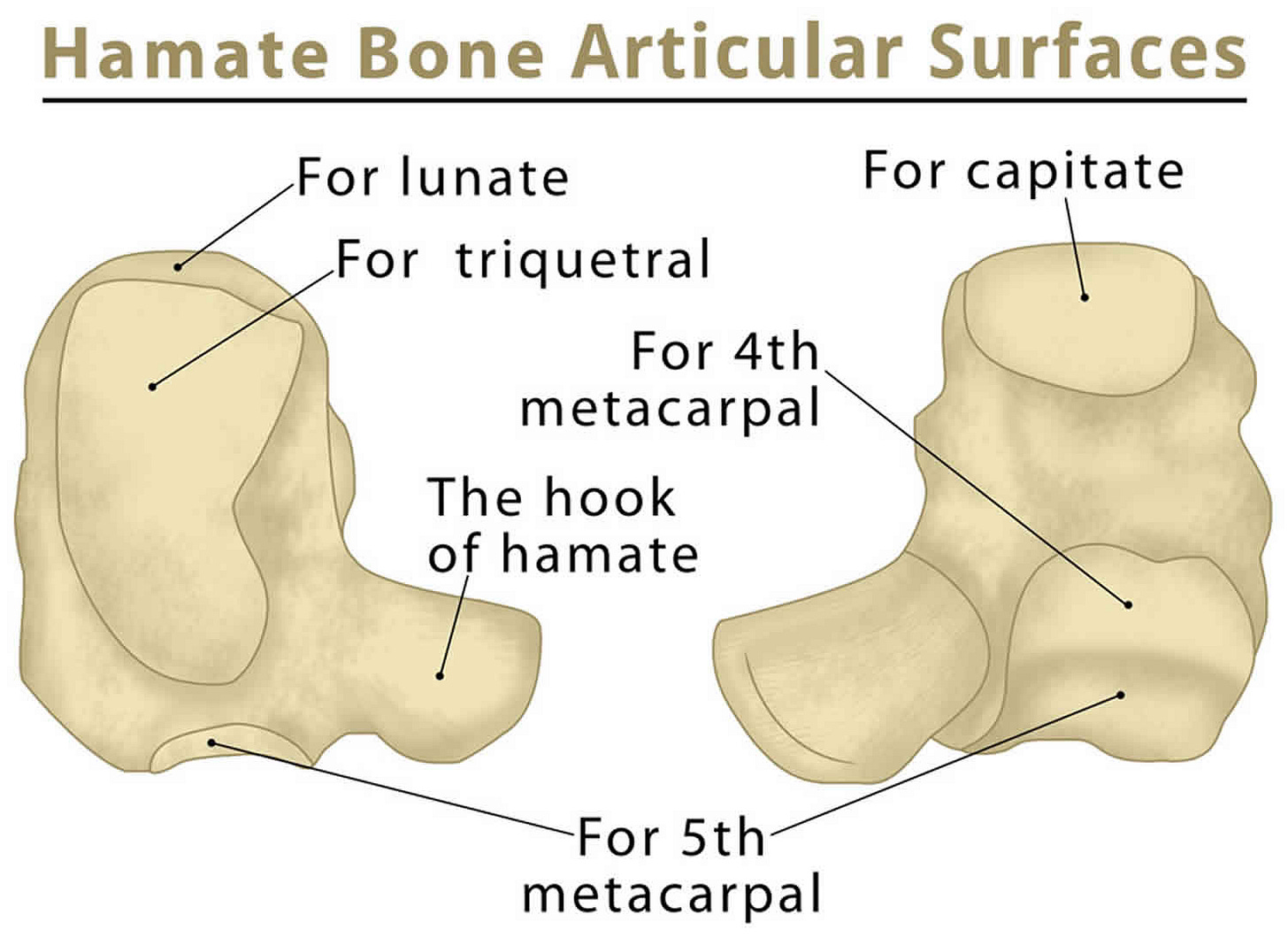“It doesn’t feel great”, is what Mike Trout told the media after leaving the game, injuring himself on a swing in Monday night’s game against the Padres. He was unable to complete the at bat and was replaced by Mickey Moniak. Trout, acknowledged as one of the best players in the game, if not the best for the last decade, is going for scans and said he has never had a wrist injury and hopes it’s “just a sprained wrist.”
The biggest concern is that he’s fractured his hamate bone. One of the eight small bones of the wrist, the hamate is located in the distal section of the wrist, closer to the fourth and fifth fingers.
Sixty-two percent of hamate injuries happen on swings, as found by a study done by Stuart Wallace in 2014. The mechanism here is well-known. The knob of the bat pushes into the heel of the hand - medically speaking, it’s the hypothenar eminence - and adds something of a resistance to the swing. Look at any batting glove and the wear at that point shows the repetition of this force, which can have both an acute and cumulative effect on the wrist.
The hamate itself is not designed to withstand this kind of force, especially repetitively, and worse, does not heal well when a fracture happens at its weakest and most likely point, known as the hook. Because it does not heal well, a common treatment is to surgically remove the hook of the bone.
The surgery is simple, taking the hook off cleanly. However, you’ll notice that the hamate has a number of articular surfaces, where it interacts with other bones. In addition, there’s cartilage, tendons, ligaments, blood vessels, and nerves tightly packed into an area designed to move in specific ways. Getting things out of whack, even a little, can create all sorts of problems in the complex structure of the wrist.
As you can see in the video above, Mike Trout’s bat may be a part of the problem. He uses a standard bat with a standard knob at the end. Research has shown that this bat, long used by nearly everyone in the game, puts additional pressure on the wrist. Several styles of adjusted knobs have been created, including the Axe Bat and the ProXR knob, to take pressure off. The bats have seen some wide adoption, but it remains a small minority.
Baseball Prospectus did a study on the claims of the Axe Bat back in 2016, which showed some positive effects, but it didn’t study whether it did those while also relieving pressure on the wrist. Axe Bat commissioned a study back in 2014 that showed some evidence of this, but it was its own study.
Most players that have had surgery to remove the hamate come back in about six weeks. For Trout, missing six weeks would mean a cost of about $7.9m in value lost to the IL and in a season that could be defining for the franchise, that loss could be much higher if this costs them any advantage they have in re-signing Shohei Ohtani.
It’s impossible to find comparable players for Trout without heading to Cooperstown, but there is one solid one with a very similar injury: Giancarlo Stanton. Wallace’s study came just before Stanton injured his wrist in 2015, but showed that while power came back to normal levels for most players, it took time. I noted this back in 2012 at Sports Illustrated, when Pablo Sandoval had surgery on his hamates of both hands. He injured them a year to the day apart and showed a loss of power after returning in almost identical fashion.
For Stanton, he showed this exact pattern with his injury. Playing only 74 games in the 2015 season due to the injury, he hit 27 homers. The next season, he hit the same number. Statcast showed that his exit velocity was still there, at 120 mph peak each season, though I don’t know the date of that 2016 blast. I’m curious if it came at the end of the season. By 2017, the power was definitely back, as he led the league with 59 homers.
In his age-31 season, Trout has been, well, ordinary. Great, but not up to his standard and increasingly overshadowed by Shohei Ohtani’s nightly impossibilities. Trout’s career pattern is starting to look like Ken Griffey Jr. That’s hardly an insult to either, but from that same age point, Griffey wasn’t the same player that had exploded on the scene as injuries increasingly held him out and cost him some of his physical gifts.
Baseball Reference sees the most similar batters to Trout as Duke Snider, Willie Mays, and Barry Bonds. Nice company, and deservedly so. However, both Snider had a similar drop-offs in his careers. Snider had his last “black ink” at age-29 (he did lead the league in strikeouts at age-30) and was a 1-2 win player for his final five seasons before his last negative-WAR season.
Mays’ decline was much slower, putting up the peak of his career between age-31 and age-35, just missing another double-digit WAR at age-36. His godson, Bonds, put up similar late-career numbers, and I’ll just leave that there. Being compared to these three feels almost sacrilegious, but shows there’s multiple paths from Trout’s current age.
As of 830am Eastern, there has been no update on Trout, which is understandable with the time difference. The expectation is that he’ll have more scans, as he indicated after the game, which would likely occur early Tuesday morning, though a delay due to the holiday is possible. X-rays would have already been taken and could be indicative. That’s it’s not been noted as a fracture or not isn’t unusual, even if known. A CT scan is the likely next step, though an MRI can be useful and could be more accessible.
If Trout does have a hamate fracture and surgery is done, the standard is six weeks lost. This is very consistent across all types of players and is functionally a very clean fracture. The bone has to heal slightly, but is not fusing, so the time should be less and the trauma to the area minimal with modern tools. If Trout’s injury is a sprain, it could actually be more complex and the timeline goes from day to day to months, if a surgical fix is necessary, though this is rare.
As always, I will update you as more information comes in. Have a great Fourth of July.





